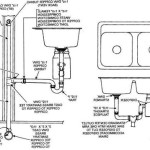Best Ventilation for Bathrooms Without Windows
Ensuring proper ventilation in bathrooms without windows is crucial for maintaining a healthy and comfortable environment. By understanding the essential aspects of bathroom ventilation, one gains insight into effective solutions for managing humidity, removing odors, and preventing mold growth. This article explores the fundamental components of ventilation for bathrooms without windows and the key factors to consider.Ventilation involves the exchange of air, removing stale, humid air and replacing it with fresh, drier air. In bathrooms without windows, ventilation becomes even more critical due to the lack of natural airflow. Essential aspects of bathroom ventilation include the type of ventilation system, fan size and placement, and proper maintenance.
Types of Ventilation Systems
There are two main types of ventilation systems: natural and mechanical. Natural ventilation relies on passive airflow through open doors, windows, or vents. Mechanical ventilation, on the other hand, uses powered fans to extract air from the bathroom.
Fan Size and Placement
The size of the ventilation fan is determined by the bathroom's volume, as larger bathrooms require more airflow. Proper placement of the fan is also crucial, as it should be installed high on the wall, near the source of moisture (such as the shower or bathtub).
Proper Maintenance
Regular maintenance of the ventilation system is essential to ensure its optimal performance. Cleaning the fan blades and grill regularly removes dust and debris, preventing airflow obstructions. Additionally, replacing the fan motor or filter (if applicable) as per the manufacturer's instructions maintains its efficiency.
Key Factors to Consider
Besides the essential aspects of ventilation, there are several key factors to consider for effective bathroom ventilation without windows:
- Door Undercut: Leaving a small gap at the bottom of the bathroom door allows for passive airflow when the fan is not in use.
- Humidity Sensor: Humidity sensors can be installed to automatically turn on the ventilation fan when humidity levels rise.
- Ventilation Boost: Installing a fan with a boost feature provides additional airflow when needed, such as during or after a shower.
Conclusion
Ensuring proper ventilation in bathrooms without windows is essential for health, comfort, and preventing mold growth. By understanding the essential aspects of bathroom ventilation, including system type, fan size and placement, proper maintenance, and key factors to consider, one can effectively manage humidity, remove odors, and maintain a healthy and comfortable bathroom environment.

No Bathroom Window Problem 6 Tricks To Keep Your Room Fresh Homify

How To Brighten Up A Bathroom Without Windows By Mira Showers

How To Properly Ventilate A Bathroom Without Window

How To Ventilate A Bathroom Without Windows

How To Vent A Bathroom With No Outside Access

7 Ways To Open Up A Windowless Bathroom Bob Vila

Ventilation In Bathroom Ideas For A Pleasant Restroom Ambience

How Do You Air Out A Bathroom Without Window Victoriaplum Com

7 Top Tips For Bathrooms Without A Window

5 Ideas To Open Up A Windowless Bathroom
Related Posts







